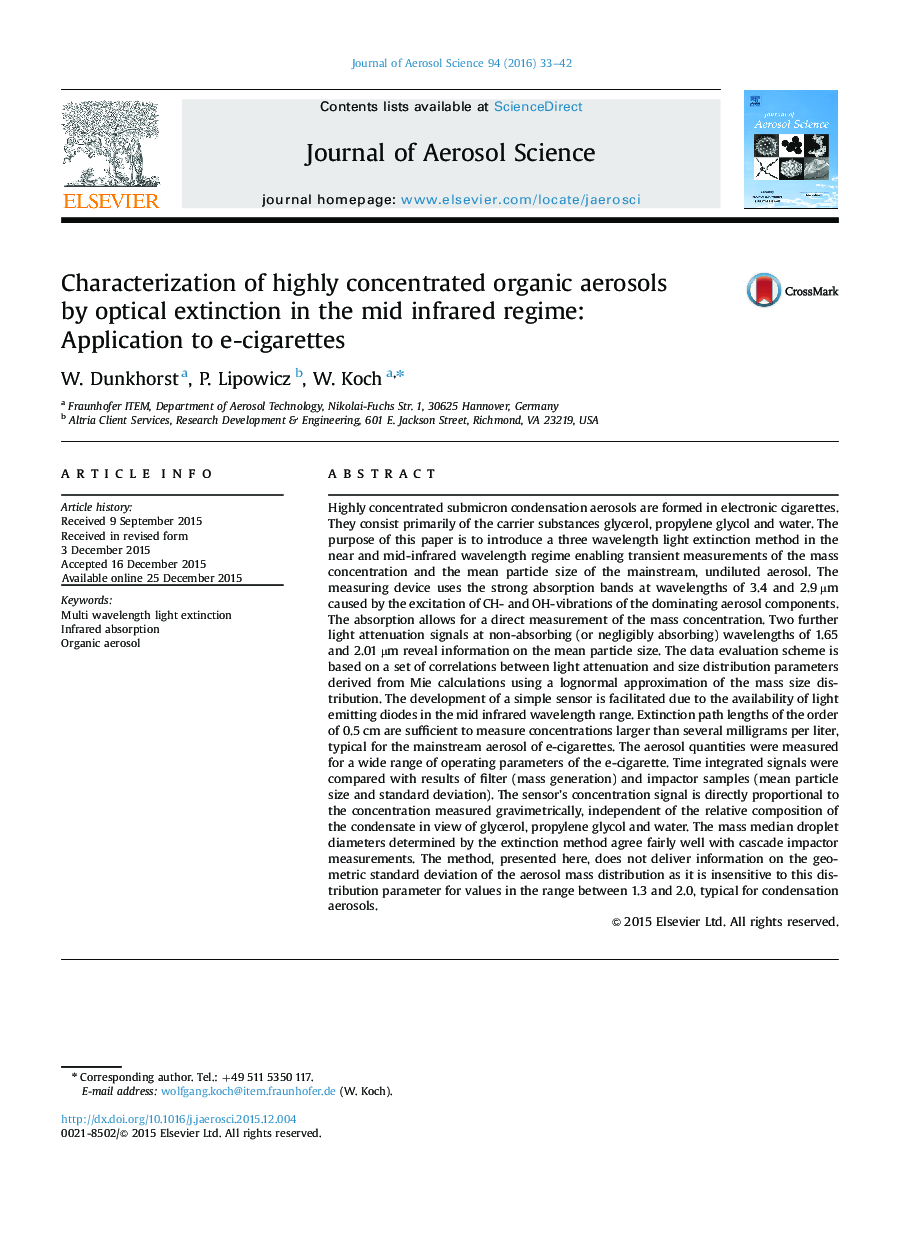| Article ID | Journal | Published Year | Pages | File Type |
|---|---|---|---|---|
| 4452215 | Journal of Aerosol Science | 2016 | 10 Pages |
•Use of material specific light absorption in the mid infrared regime for aerosol characterization.•Light extinction in the Rayleigh and near Rayleigh regime.•Development of a simple three wavelength extinction sensor using infrared LEDs.•Measurement of mass concentration and mean particle size.•Highly time resolved analysis of mainstream aerosols formed in e-cigarettes.
Highly concentrated submicron condensation aerosols are formed in electronic cigarettes. They consist primarily of the carrier substances glycerol, propylene glycol and water. The purpose of this paper is to introduce a three wavelength light extinction method in the near and mid-infrared wavelength regime enabling transient measurements of the mass concentration and the mean particle size of the mainstream, undiluted aerosol. The measuring device uses the strong absorption bands at wavelengths of 3.4 and 2.9 µm caused by the excitation of CH- and OH-vibrations of the dominating aerosol components. The absorption allows for a direct measurement of the mass concentration. Two further light attenuation signals at non-absorbing (or negligibly absorbing) wavelengths of 1.65 and 2.01 µm reveal information on the mean particle size. The data evaluation scheme is based on a set of correlations between light attenuation and size distribution parameters derived from Mie calculations using a lognormal approximation of the mass size distribution. The development of a simple sensor is facilitated due to the availability of light emitting diodes in the mid infrared wavelength range. Extinction path lengths of the order of 0.5 cm are sufficient to measure concentrations larger than several milligrams per liter, typical for the mainstream aerosol of e-cigarettes. The aerosol quantities were measured for a wide range of operating parameters of the e-cigarette. Time integrated signals were compared with results of filter (mass generation) and impactor samples (mean particle size and standard deviation). The sensor’s concentration signal is directly proportional to the concentration measured gravimetrically, independent of the relative composition of the condensate in view of glycerol, propylene glycol and water. The mass median droplet diameters determined by the extinction method agree fairly well with cascade impactor measurements. The method, presented here, does not deliver information on the geometric standard deviation of the aerosol mass distribution as it is insensitive to this distribution parameter for values in the range between 1.3 and 2.0, typical for condensation aerosols.
